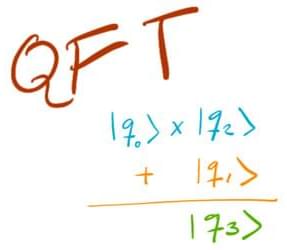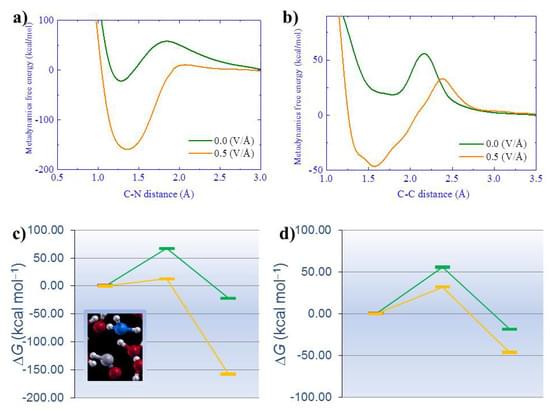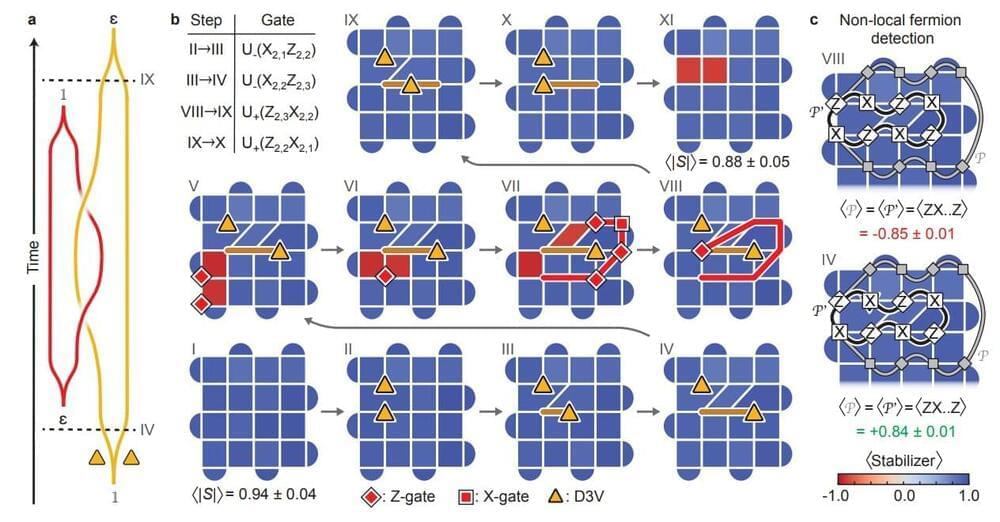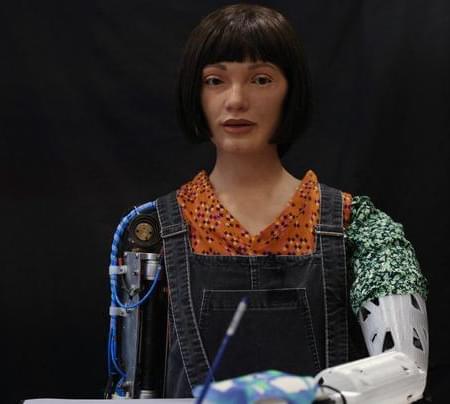Learn how to use the quantum Fourier transform (QFT) to do basic arithmetic.


Shortly after Max Planck shook the scientific world with ideas about the fundamental quantization of energy, researchers built and leveraged theories of quantum mechanics to resolve physical phenomena that had previously been unexplainable, including the behavior of heat in solids and light absorption on an atomic level. In the 120-plus years since, researchers have looked beyond physics and used quantum theory’s same perplexing — even “spooky,” according to Einstein — laws to solve inexplicable phenomena in a variety of other disciplines.
Today, researchers at the Johns Hopkins Applied Physics Laboratory (APL) in Laurel, Maryland, are applying quantum mechanics to biology to better understand of one of nature’s biggest mysteries — magnetosensitivity, an organism’s ability to sense Earth’s magnetic field and use it as a tool to adjust some biological processes. And they’ve found some surprising results.
In a recent study, APL research engineer and scientist Carlos Martino and his APL colleagues Nam Le, Michael Salerno, Janna Domenico, Christopher Stiles, Megan Hannegan, and Ryan McQuillen, along with Ilia Solov’yov from the Carl von Ossietzky University of Oldenburg in Germany, found that an enzyme that plays a central role in human metabolism has some of the same key features as a magnetically sensitive protein found in birds.

Exciting.
The search for the chemical origins of life represents a long-standing and continuously debated enigma. Despite its exceptional complexity, in the last decades the field has experienced a revival, also owing to the exponential growth of the computing power allowing for efficiently simulating the behavior of matter—including its quantum nature—under disparate conditions found, e.g., on the primordial Earth and on Earth-like planetary systems (i.e., exoplanets). In this minireview, we focus on some advanced computational methods capable of efficiently solving the Schrödinger equation at different levels of approximation (i.e., density functional theory)—such as ab initio molecular dynamics—and which are capable to realistically simulate the behavior of matter under the action of energy sources available in prebiotic contexts.



Alzheimer’s disease is a neurodegenerative disease that affects millions of people worldwide. It is characterized by the accumulation of amyloid plaques and disordered protein fibers called tau tangles in the brain, which lead to cognitive impairment and dementia. Scientists have long been trying to understand the underlying mechanisms behind Alzheimer’s disease and find effective treatments for the condition.

Some classical computers have error correction built into their memories based on bits; quantum computers, to be workable in the future, will need error correction mechanisms, too, based on the vastly more sensitive qubits.
Cornell researchers have recently taken a step toward fault-tolerant quantum computing: they constructed a simple model containing exotic particles called non-Abelian anyons, compact and practical enough to run on modern quantum hardware. Realizing these particles, which can only exist in two dimensions, is a move towards implementing it in the real world.
Thanks to some creative thinking, Yuri Lensky, a former Bethe/Wilkins/Kavli Institute at Cornell (KIC) postdoctoral fellow in physics in the College of Arts and Sciences (A&S), collaborating with Eun-Ah Kim, professor of physics (A&S), came up with a simple “recipe” that could be used for robustly computing with non-Abelian anyons, including specific instructions for executing the effect experimentally on devices available today.


Hoping to improve on those earlier efforts, Matthew Daugherty, a biochemist at the University of California San Diego, and colleagues used sophisticated computer software to trace the evolution of hundreds of human genes by searching for similar sequences in hundreds of other species. Genes that seemed to have appeared first in vertebrates and had no predecessors in earlier animals were good candidates for having jumped across from bacteria, particularly if they had counterparts in modern microbes. Among the dozens of potentially alien genes, one “blew me away,” Daugherty recalls.
The gene, called IRBP (for interphotoreceptor retinoid-binding protein), was already known to be important for seeing. The protein it encodes resides in the space between the retina and the retinal pigment epithelium, a thin layer of cells overlying the retina. In the vertebrate eye, when light hits a light-sensitive photoreceptor in the retina, vitamin A complexes become kinked, setting off an electrical pulse that activates the optic nerve. IRBP then shifts these molecules to the epithelium to be unkinked. Finally, it shuttles the restored molecules back to the photoreceptor. “IRBP,” Zhu explains, “is essential for the vision of all vertebrates.”
Vertebrate IRBP most closely resembles a class of bacterial genes called pepsidases, whose proteins recycle other proteins. Since IRBP is found in all vertebrates but generally not in their closest invertebrate relatives, Daugherty and his colleagues propose that more than 500 million years ago microbes transferred a pepsidase gene into an ancestor of all living vertebrates. Once the gene was in place, the protein’s recycling function was lost and the gene duplicated itself twice, explaining why IRBP has four copies of the original pepsidase DNA. Even in its microbial forebears, this protein may have had some ability to bind to light-sensing molecules, Daugherty suggests. Other mutations then completed its transformation into a molecule that could escape from cells and serve as a shuttle.
This video is my take on 3B1B’s Summer of Math Exposition (SoME) competition.
It explains in pretty intuitive terms how ideas from topology (or “rubber geometry”) can be used in neuroscience, to help us understand the way information is embedded in high-dimensional representations inside neural circuits.
OUTLINE:
00:00 Introduction.
01:34 — Brief neuroscience background.
06:23 — Topology and the notion of a manifold.
11:48 — Dimension of a manifold.
15:06 — Number of holes (genus)
18:49 — Putting it all together.
____________
Main paper:
Chaudhuri, R., Gerçek, B., Pandey, B., Peyrache, A. & Fiete, I. The intrinsic attractor manifold and population dynamics of a canonical cognitive circuit across waking and sleep. Nat Neurosci 22, 1512–1520 (2019).
_________________________
Other relevant references:
1. Jazayeri, M. & Ostojic, S. Interpreting neural computations by examining intrinsic and embedding dimensionality of neural activity. arXiv:2107.04084 [q-bio] (2021).
2. Gallego, J. A., Perich, M. G., Chowdhury, R. H., Solla, S. A. & Miller, L. E. Long-term stability of cortical population dynamics underlying consistent behavior. Nat Neurosci 23260–270 (2020).
3. Bernardi, S. et al. The Geometry of Abstraction in the Hippocampus and Prefrontal Cortex. Cell 183954–967.e21 (2020).
4. Shine, J. M. et al. Human cognition involves the dynamic integration of neural activity and neuromodulatory systems. Nat Neurosci 22289–296 (2019).
5. Remington, E. D., Narain, D., Hosseini, E. A. & Jazayeri, M. Flexible Sensorimotor Computations through Rapid Reconfiguration of Cortical Dynamics. Neuron 98, 1005–1019.e5 (2018).
6. Low, R. J., Lewallen, S., Aronov, D., Nevers, R. & Tank, D. W. Probing variability in a cognitive map using manifold inference from neural dynamics. http://biorxiv.org/lookup/doi/10.1101/418939 (2018) doi:10.1101/418939.
7. Elsayed, G. F., Lara, A. H., Kaufman, M. T., Churchland, M. M. & Cunningham, J. P. Reorganization between preparatory and movement population responses in motor cortex. Nat Commun 7, 13239 (2016).
8. Peyrache, A., Lacroix, M. M., Petersen, P. C. & Buzsáki, G. Internally organized mechanisms of the head direction sense. Nat Neurosci 18569–575 (2015).
9. Dabaghian, Y., Mémoli, F., Frank, L. & Carlsson, G. A Topological Paradigm for Hippocampal Spatial Map Formation Using Persistent Homology. PLoS Comput Biol 8, e1002581 (2012).
10. Yu, B. M. et al. Gaussian-Process Factor Analysis for Low-Dimensional Single-Trial Analysis of Neural Population Activity. Journal of Neurophysiology 102614–635 (2009).
11. Singh, G. et al. Topological analysis of population activity in visual cortex. Journal of Vision 8, 11–11 (2008).
The majority of animations in this video were made using Manim — an open source python library (github.com/ManimCommunity/manim) and brainrender (github.com/brainglobe/brainrender)